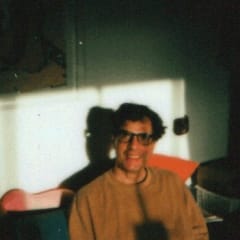Paulo Monteiro Paulo Monteiro
Vaslav Nijinsky, a son of dancers, begins dancing at the age of four. He joins Sergei Diaghilev’s company, in which he obtained international recognition while successfully attempting to promote russian ballet. Nijinsky was introduced to Sergei Diaghilev by his boyfriend, the prince Pavel Lvov. Diaghilev, who was charismatic and had a strong personality, directed the Ballets Russes company with an iron hand. He had created the group in 1909 aiming to transform the structures of classical dance. With an unorthodox technique, the then called God of dance revolutionized ballet in the beginning of the 20th century, reconciling his technique with a power of seduction over the public; his biggest triumph was elevating the masculine figure as high as the feminine one in ballet. As a choreographer, Nijinsky was considered to be daring and original — the beginning of modern dance is attributed to him. One of his most polemic choreographies was L'Après-Midi d'un Faune, set to music by Debussy, which was booed during its premiere in 1912. In September 1913, Ballets Russes travelled to Rio de Janeiro and Buenos Aires. Because it was a sea journey, Diaghilev did not come. Tormented by jealousy, Nijinsky rashly married one of the company’s dancers, Romola de Pulszky. Upon hearing the news, Diaghilev fired Nijinsky. Nijinsky’s attempt at creating his own company fails during World War I, when he was imprisoned in a concentration camp in Hungary, from which he escaped only in 1916 through Diaghilev’s intercession. For some time, he was estranged from the group, joining the company again in 1917, in the United States. In 1919, at 29 years old, affected by schizophrenia, he abandoned the stage.
There are no similarities between Monteiro and Nijinsky — after all, Paulo begins painting in the beginning of the 1980’s —, but one cannot avoid a comparison in aspects such as memory, the records of movements, suppositions, femininity, everything that a body can provoke in the face of its surrounding space. The multiple and frequently humorous decisions of the artist between sometimes sensual, other times derisive forms and colors repeat themselves along the walls without the intention of arriving anywhere.
Monteiro started working in 1977, drawing comics whose style was influenced by cartoonists such as Robert Crumb, George McManus and the caricaturist Luiz Sá. Between 1983 and 1985, with Carlito Carvalhosa, Fábio Miguez, Nuno Ramos and Rodrigo Andrade, he formed the group Casa 7. Together, the artists participated in exhibitions at the São Paulo Contemporary Art Museum, the Rio de Janeiro Modern Art Museum and the 18th São Paulo Art Biennial, in 1985, showing their works that were marked by neo-expressionism. From the end of the 1980’s until the beginning of the 2000’s, his research begins moving towards potent, strong colors, but with no traces of gloominess. Reds and blues are paired with ochre tones. Surfaces are filled uniformly almost in their entirety.










